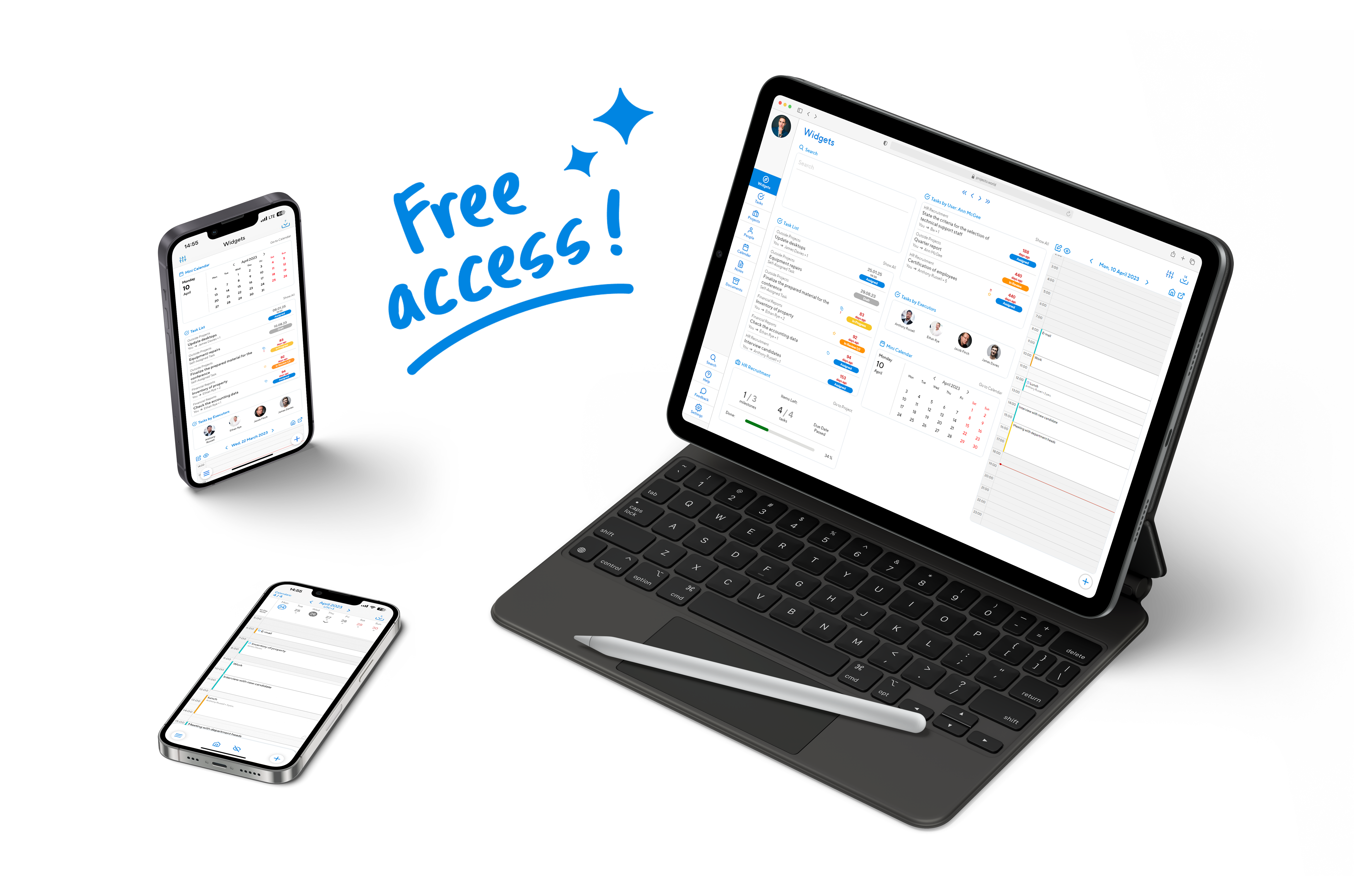Task planning for a team may seem simple at first glance, but when it comes to practical implementation, many factors need to be considered.
We have all heard about effective planning and proper task setting, about control… but when it comes to practical implementation, all the advice and theory quickly break down into questions like «why?», «how?», «where?», and so on.
Such questions arise inevitably, not only for newcomers, but also for experienced managers. Below, we will try to understand in detail how to ensure that tasks are solved in a team.
Just a bit of theory
When we talk about a «team», we don’t just mean a working group, we mean something more. Each member has an expanded set of responsibilities and is usually a professional in their field. Such people practically do not need instructions from the manager.
But it’s not the only thing that makes a team to be the team. In effective teams, all members are motivated and act together, ensuring high cohesion and focus on the common result.
Self-sufficient teams do not need strict control and, even less, micromanagement. Each team member knows their role and place, as well as own responsibilities. Also know how to apply professional tools and organize their part of the work.
The presence and tasks of a team leader essentially are in fact reduced to the role of a visible or invisible leader who sets the general pace and guides in the right direction. The team leader also acts as a kind of link between all team members.
Creating your own team is every manager’s dream.
The most common teams are web-agencies, software development teams and private enterprises with a small staff.
Note that the term «team» is often applied to game groups, directly hinting at the cohesion of its members.
What is needed for team work
As mentioned above, teams are made up of professionals in their field. Therefore, all they need for coordinated actions are:
- A common goal and sufficient motivation.
- Effective and efficient means of communication (for synchronizing actions between individual participants and for discussing tasks).
- Tools for self-assessment (this is the so-called retrospective, which allows you to look back and evaluate the result of your actions to realize that everything was done correctly).
And while the first point (motivation) is the merit of leaders and team members themselves (self-motivation), the second and third points are successfully handled by technical tools. The most effective automation tools can comprehensively address both issues. For example, like Projecto.
Tasks of an effective team with Projecto
To ensure that the procedures for planning, setting tasks, monitoring results, and so on are properly connected, planners are often used. Usually these are special software solutions. However, such programs always have a weak point concerning communication management.
Projecto optimally combines all necessary functions in one interface. Not only large enterprises with complex structures, but also small teams can work here.
So, what we can offer:
Coherence
Also referred to as «synchronization» or «cohesiveness». In order for all team members to be on the same page, they need to constantly communicate and be aware of all the events that are happening in the team. This includes understanding tasks, responsibilities, deadlines, areas of accountability, available assistance, and more.
Projecto provides the necessary entities for all of this, such as:
- projects and tasks
- employee calendars
- Inboxes for incoming notifications, news, business correspondence, etc.
- notes
- documents
- contact storage
- cross-referencing search and information systematization
- chats or discussions, and much more besides.
Through Projecto, you can synchronize all your workflow processes (and sometimes even personal ones, if such an approach is welcomed in your group or company).
At any given time, an employee can refer to this database to clarify their current tasks, find out which ones are prioritized, inquire about assignments to others, ask questions to other team members (with conversation history saved), synchronize or check their own events with other employees’ calendars, and more.
Ready-made mobile applications take engagement to a new level – the job tasks will always be at the employee’s fingertips, with real-time notifications and alerts.
Goals and strategy
Planning work on a common project in Projecto is easily transferred to the electronic plane:
- set tasks
- discuss them
- adjust them
- delegate them
- discuss again
- break them down into smaller tasks and subtasks
- adjust again
- accept the result together, etc.
There are no limits or restrictions. Everything is in your hands, Projecto just helps you. The system is easily adaptable to teams of any size.
Proactivity
There is no need to wait for tasks to be assigned. A team is a community of like-minded people. Propose your ideas, develop documents, and be proactive in any other way.
Projecto will provide the necessary flexibility in communications and preserve all your actions. The main thing is not to forget to assign the appropriate privileges in the user settings.
Retrospective and accountability
Whether your actions were successful or led to problems, who or what caused failure, where mistakes were made – with Projecto, this will be very easy to find out.
The system stores all necessary information for subsequent analysis and conclusions. Moreover, even if an employee hastily leaves the team or suddenly falls ill, all their data and activity will remain with you (tasks, correspondence, documents, etc.). A special migration wizard allows you to redistribute the pending tasks.
In lieu of a conclusion
An experienced team with а defined mission is the key to success! Projecto allows you to turn any usual team into a tight-knit crew. The manager only needs to do a little work, to set the right pace and motivation.
